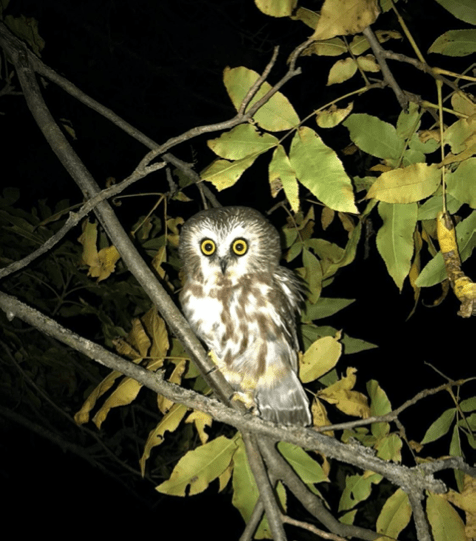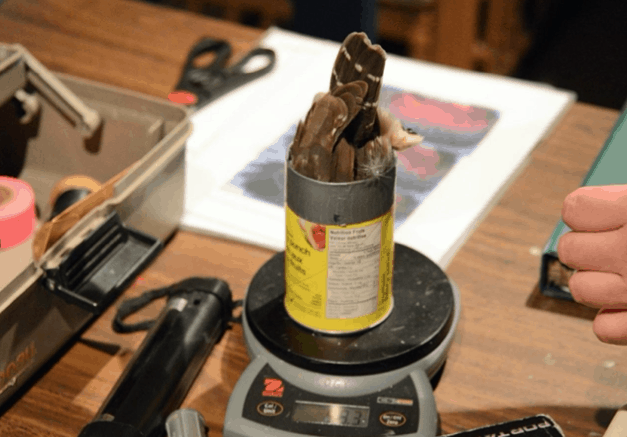 By Guest Columnist Andrew Silver, Wildlife Researcher
By Guest Columnist Andrew Silver, Wildlife Researcher
Bird Banders Who Give a Hoot! It’s ‘owl’ for the research!!
Every October for the past 21 years (except 2018) volunteers, as well as a host of other owl enthusiasts, have spent their evenings on the north shore of Pigeon Lake near Bobcaygeon trying to lure migrating Northern Saw-whet Owls (Aegolius acadicus). This project is part of a North American bird banding network and is overseen by Dr. Erica Nol, ornithology professor at Trent University. Over the years, this study location has caught over 1000 owls and recaptured about 100 owls caught by other banding stations. Other banding stations have also recaptured owls that we have banded. From this information, researchers have determined that these birds have dramatic population fluctuations and erratic migration patterns. They migrate in many directions and over long distances. For the most part, birds from Ontario do not migrate further south than Virginia, USA.
Owls are captured using a group of mist nets specifically designed for birds. The nets are set up in a polygon in a wooded area on Trent University property. An audio recording of the Northern Saw-whet Owl territorial call, which attracts owls to the nets, plays continuously while the nets are set. With great anticipation, banders and volunteers check the mist nets frequently (every 10-20 minutes) for at least 4 hours after dark each evening. Nets are not set if the weather is not suitable.
When an owl is caught in the fine netting, it is gently removed by an experienced bird handler and placed temporarily in a small soft bag to be taken back to the banding station for processing. Trained banders record age/sex, wing length and mass for each bird, as well as the date, time, and specific net for each capture. Each “new” owl (i.e., one that doesn’t already have a band) is banded with a uniquely numbered aluminum band. These bands will stay on the owl for the rest of its life. If captured again by another banding station later in its journey or in a subsequent year, banders will know when and where it was previously captured from the ID number. There are more than 100 bird banding stations in Eastern North America that band Saw-whet Owls each year which greatly increases the potential for individual owls to get recaptured.



